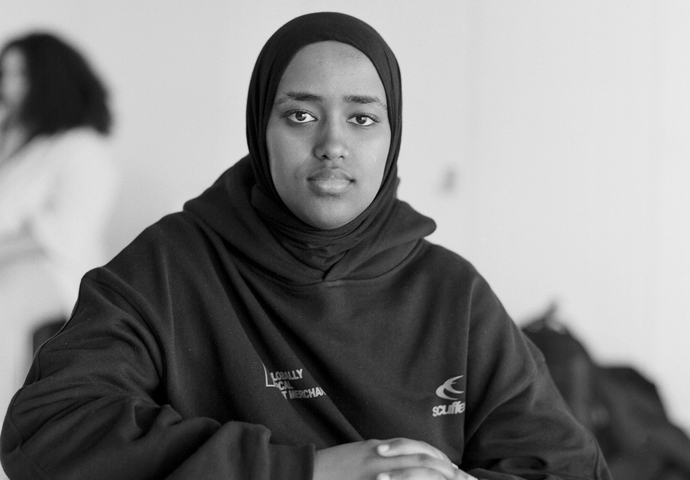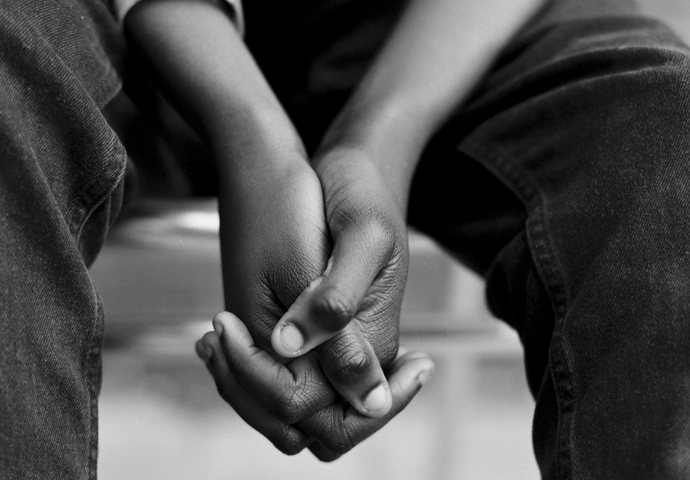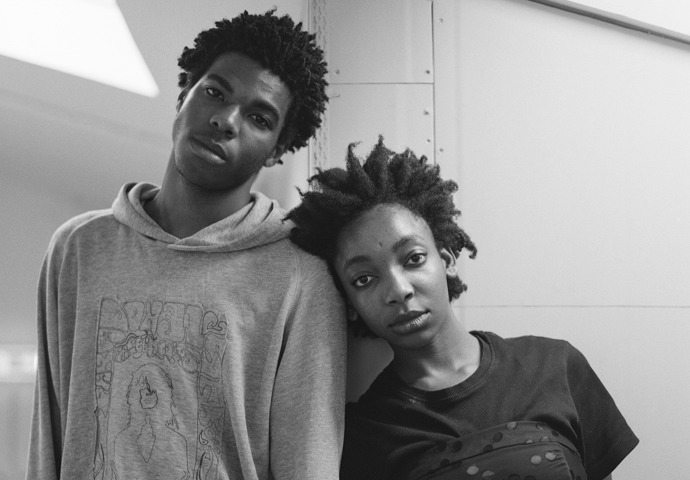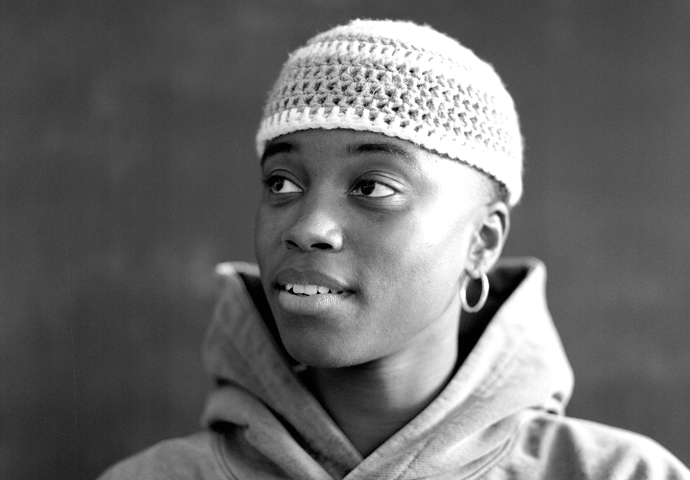Work for the Roundhouse exhibition by Myah Asha Jeffers
THE camera is everywhere. Millions of photographs are taken each minute around the world and the upshot is humans today are more aware than at any time in history of their image of self.
Photographer Myah Asha Jeffer’s latest exhibition Acts of Communion – part of the Roundhouse’s Three Sixty Festival – has been shot in black and white and on film, the antithesis of the instant image world we live in now.
Myah has documented the lives of some of the young people who work at the Roundhouse and is an analogue photographer in a digital age.
“I am in love with the medium,” she says of the joy of shooting on film and then watching her efforts appear gradually in a dark room.
“Words cannot describe how special, how magical, it is to make a photograph in an analogue way.

“You take the film to a dark room, and you watch it emerge. You have a contact sheet and you have this level of control, and then you print it.
“There is a stillness in film photography – it lacks that instant gratification. Instead it is a slower form, which brings its own magic to your work digital just does not have.”
It has been a busy 2025 for the Myah, who has recently returned from a trip to Montserrat for the Guardian and the Royal Photography Society. But the busy schedule does not mean turning to quicker processes.
Using film instead of digital means a greater scope for consideration of how to frame a shot, taking each picture with a level of thought not required with the snap-snap-snap digital cameras tempt you to do.
“We are saturated with digital imagery. It is hyper documentation and there is a balance that needs to be struck,” she says. “When you slow it down, make it more intentional, there is a real texture to your work, a grain, a feeling that you just do not get with digital photography.

The project began as a conversation between the artist and the Roundhouse team to firm up how she could capture the centre’s work with hundreds of young people involved with projects it manages.
“They gave me a loose brief, talked to me about the festival and how they wanted to document and photograph the communities that use, and are based around, the Roundhouse,” she said.
“I wanted to think about the groups that use or have a relationship to the building. I wanted to think about places where people gather, commune, as well as the building itself.”
She wanted to create a collection of images that were not posed and were genuinely representative, which meant finding a way to become part of the scenery, and be as invisible as possible.
“I chose five groups to spend time with,” she says. “It was about slipping in, being unobtrusive in my approach. I went in with a loose idea – I wanted to have the work formed by the experience. When I construct an image in my mind’s eye it can take away from that fleeting moment of magic, so I try not to have too many preconceptions.
“I try to be as invisible as possible to document the moment of truth rather than what people want to be presented as.”

It meant not just one session with her subjects, but many. “I had five weeks and went into their spaces on multiple occasions just to hang out.
“I could see what I had photographed and there was a point I began to sequence what I wanted the project to become, what I wanted it to look like.”
Her choice of equipment mattered.
“I turned to a smaller 35mm camera for some images as it was less obtrusive – that helps when you are documenting movement, singing, playing, dancing,” she says. “It meant I could be responsive to what was happening. I wanted a mixture of moments, many that felt quite intimate.”
She recalls the sense of excitement when she first put a camera viewfinder to her eye and pressed the button.
“I remember the first picture I took: my parents gave me an instamatic camera for my 10th birthday to use at my party. It was also a going away party as we were moving from London to Barbados,” she says.
“My friends were dancing to Destiny’s Child in my living room. I was quite an awkward and ungainly child and this was a way of connecting. I could stand back, watch them dance and take photographs. The feeling was really gratifying – my way of announcing I was there, I was present. It became a real aid.”
Myah finds her pictures have an impact and power partly through drawing on the techniques of the great reportage of the 20th century.

Myah Asha Jeffers
“A lot of my work is in black and white and 99 per cent of the time I use an analogue camera,” she adds. “I like using black and white imagery – I feel it is very honest and real to the subject.”
Her work has documented the stories of the British black diaspora, drawing on topics such as the Windrush generation.
This has led to a recognition of the role photography has played in the political and social sphere: it has been a powerful tool to reinforce stereotypes and in the past, many of its purveyors and the platforms they are published on have been part of the tools of oppression.
“Sometimes I am horrified by the violent history of photography,” she muses.
“Images can reinforce stereotypes. Today, it feels there is a duty to document alternative ways of being. Photography can find ways to project an ideology. You need to be aware of that, address and challenge it in your work.”
• Roundhouse Three Sixty, which runs until April 30, is about pushing boundaries and creating unforgettable moments across the Roundhouse site, with a mix of music, spoken word, theatre, visual arts, podcasts and club nights. For more details see: https://www.roundhouse.org.uk/roundhouse-three-sixty/
